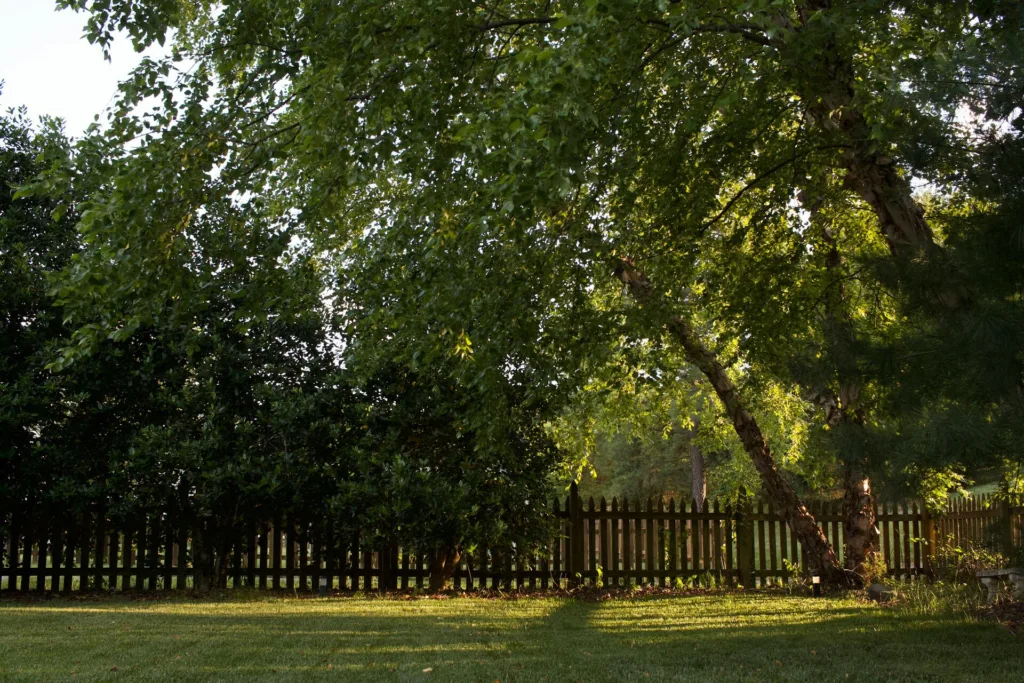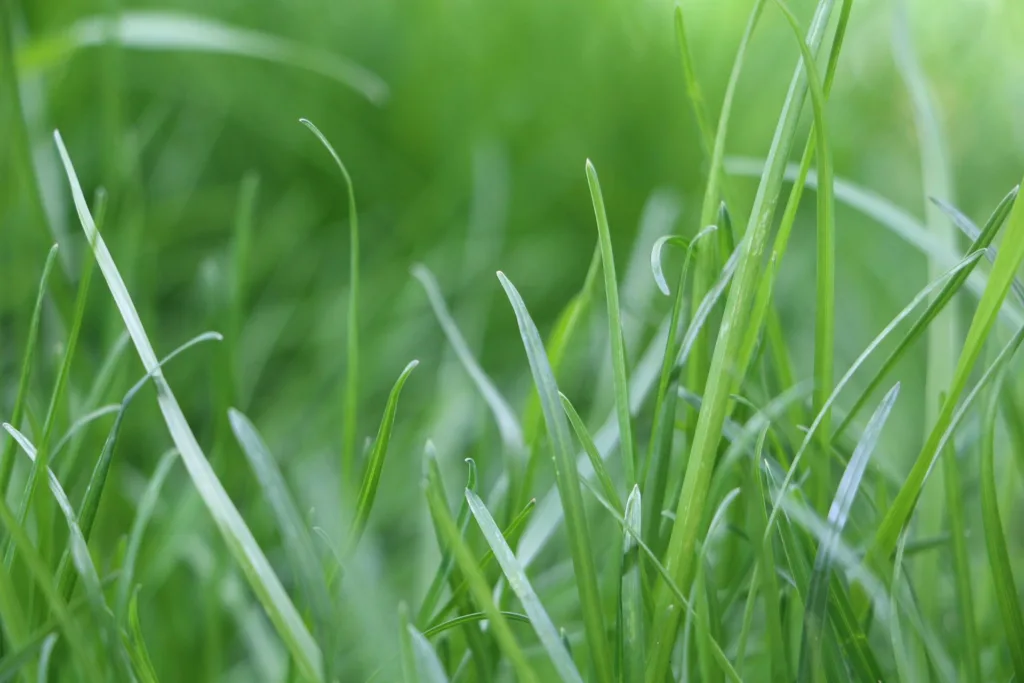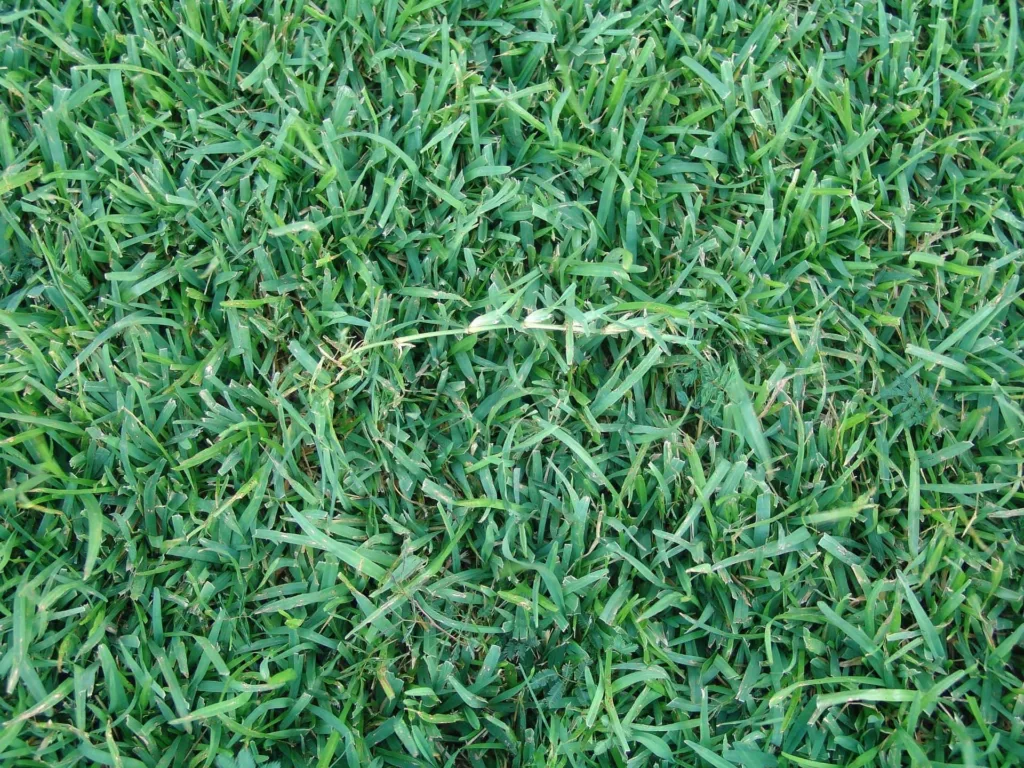As a dedicated lawn care aficionado, nurturing a resilient and vibrant lawn is more than just a hobby—it’s a passion. One grass type that stands out for its robust nature and aesthetic appeal is Tall Fescue. Not only is it a cool-season grass that thrives in various climates, but it also offers the thickness and durability required for a lush, green carpet-like appearance. Let’s dive deep into the world of Tall Fescue, exploring its characteristics, care tips, and how it compares to other popular grasses like Kentucky Bluegrass.
Introduction to Tall Fescue
When we talk about Tall Fescue, think no-nonsense grass—it’s tough, it’s resilient, and it’s pretty uncomplicated, making it a top pick for many homeowners wanting that lush, green lawn without the high maintenance. So, what exactly makes Tall Fescue stand out in the crowded world of turf grasses?
Definition and Characteristics
Tall Fescue is a cool-season perennial grass, meaning it thrives during the cooler months of spring and fall. It’s characterized by its deep roots and broad, coarse leaves that not only survive but prosper in a variety of challenging conditions—from bouts of drought to cold temperatures. Unlike some fussier types, this grass doesn’t just handle occasional neglect; it practically wears it as a badge of honor.
Adaptation and Usage
Geographically speaking, Tall Fescue has a versatile range. It performs exceptionally well in the transition zones of the USA—a temperamental slice of geography where both cool and warm-season grasses often struggle to perform consistently. This adaptability makes it a prime candidate for areas experiencing occasional temperature swings and varying moisture levels.
Choosing Tall Fescue for your lawn means betting on a performer—a grass type that offers a steady, green appearance with a toughness that suits active backyards. Families, pets, and weekend football games? No problem.
Tall Fescue’s durability takes it all in stride. With a knack for deep rooting, it draws moisture from deeper soil layers, making it not just a survivor but a thrivor in less-than-ideal conditions. Whether you’re starting a new lawn or transitioning from another type that didn’t quite cut it, consider Tall Fescue as a contender worth your seed money.
Establishing Your Tall Fescue Lawn
Choosing the Right Seed
When it comes to picking the right seeds for your lawn, not all Tall Fescue is created equal. Scouring through options? Simplify your search by looking for high-quality seed blends. Premium blends often include a mix of Tall Fescue varieties, each boasting specific traits suited for different environmental stressors like shade, drought, or heavy foot traffic.
Planting Guidelines
Timing and technique are crucial for sowing Tall Fescue. Generally, the best planting times fall during early fall, giving the grass a leg up in establishing itself before winter. Thanks to research, we know the cool temperatures and dewy conditions help seeds germinate and roots strengthen. While you can also plant in spring, beware the hot, dry summer might stress young sprouts. Planting involves:
- Soil Prep: Ensure your soil is loose and weed-free. Aerate if compacted to improve nutrient, water, and oxygen absorption.
- Seeding: Distribute seeds evenly. Use a spreader for large areas to maintain consistency. Aim for about 8 to 10 pounds of seed per 1,000 square feet.
- Watering: After seeding, keep the soil consistently damp but not soggy. Typically, light watering twice a day does the trick until you notice sprouting.
Patience and precision during these initial steps pave the way for a Tall Fescue lawn that’s both resilient and lush, ready to stand up to the challenges it might face throughout the year.

Essential Tall Fescue Lawn Care
When it comes to maintaining a healthy Tall Fescue lawn, three core areas need your focus: watering, feeding, and mowing. This trifecta of lawn care will keep your fescue looking lush and verdant.
Watering Needs
Tall Fescue is known for its drought tolerance, yet that doesn’t mean it prefers to go dry. Watering deeply but infrequently is the key strategy here. Aim for about 1 to 1.5 inches of water per week, whether from rainfall or manual watering. It’s best to water early in the morning, reducing evaporation and giving the grass blades time to dry off during the day, which helps prevent disease.
Feeding Your Lawn
Nutrition matters if you want your fescue to thrive. Feed your lawn with a balanced fertilizer in early spring and late fall. Look for products that are high in nitrogen, which is crucial for leaf growth, but ensure it’s a slow-release form to prevent rapid, weak growth that can’t sustain itself. Don’t overdo it—too much fertilizer can harm your lawn and the environment.
Mowing Practices
Mowing is not just about keeping your lawn at an aesthetically pleasing height; it also promotes healthy grass. For Tall Fescue, the ideal cutting height is between 2.5 and 3.5 inches. This height range helps the grass develop a deep root system to withstand drought and heat stress. Ensure your mower blades are sharp; dull blades tear the grass, leading to a ragged appearance and increased susceptibility to diseases.
By adhering to these watering, feeding, and mowing guidelines, your Tall Fescue lawn can remain healthy, green, and full, becoming a beautiful and resilient part of your home landscape.
Overcoming Challenges
Tall Fescue, like any other superstar in the grass world, has its own set of nemeses in the form of weeds, pests, and diseases. Being prepared to tackle these head-on can be the difference between a so-so lawn and a spectacular one.
Weed and Pest Management: Weeds are the ultimate gatecrashers. To keep them at bay, regular maintenance is key. Use pre-emergent herbicides in early spring to stop weed seeds from sprouting and post-emergent herbicides for those that slip through the cracks. For pests, including grubs and chinch bugs, keep an eye out for discolored or thinning patches of grass which might suggest an infestation. Appropriate insecticides can be used as a counterattack; just make sure you choose one that’s safe for Tall Fescue.
Disease Prevention: Tall Fescue isn’t immune to getting sick. Brown patch and fusarium blight are the common culprits to watch for. These diseases love moist conditions, so managing your watering routine is crucial—early morning watering helps leaves dry out during the day. If any part of your lawn starts looking funky, like circular brown patches, it’s time to get a fungicide into the game.
With a bit of vigilance and the right care tactics, your Tall Fescue lawn should keep thriving despite these challenges. Simple, right?
Advanced Tips and Techniques
Achieving that showroom-quality lawn goes beyond just feeding and mowing. Here, we’ll dive into some pro strategies for keeping your Tall Fescue lawn not only alive but thriving.
How to Overseed a Tall Fescue Lawn
Effective overseeding can be your secret weapon in maintaining a dense, vigorous turf. Kick-off by mowing your lawn a bit shorter than usual and removing the clippings—this improves seed-to-soil contact. Choose a quality overseed that matches your existing lawn type to maintain consistency. Spread the seed using a spreader and ensure good soil contact by lightly raking. Follow up with a starter fertilizer and keep the area moist until seeds germinate. Remember, the best time for overseeding is early fall, when temperatures are mild, and there is plenty of moisture.
Seasonal Care
Spring: This is the wake-up call. Fertilize early to jump-start root development. Rake gently to remove winter debris and aerate if the soil is compacted.
Summer: It’s all about maintenance. Water deeply but infrequently to encourage deep roots, mow at the right height, and tackle weeds before they take over.
Fall: Prepare for dormancy. Another round of fertilization in early fall helps the grass recover from summer stress and build resilience for winter. This is also the prime time for overseeding as mentioned earlier.
Winter: Minimal interference is key. Avoid walking on frosted grass to prevent blade breakage and keep an eye out for snow mold as snow begins to melt.
These advanced strategies ensure your Tall Fescue lawn remains a lush, vibrant expanse through the shifting seasons. By implementing these tips, you’ll cater to the unique needs of Tall Fescue, providing you with a robust lawn that can weather the elements year-round.
Comparing Tall Fescue With Other Grasses
When it comes to choosing the right grass for your lawn, the decision often comes down to Tall Fescue versus Kentucky Bluegrass. Both are popular choices, but they have different strengths and optimal conditions for growth that can influence your selection. Let’s break down the pros and cons of each to help you decide what’s best for your yard.
Tall Fescue Pros:
- Durability: Thanks to its deep roots, Tall Fescue is exceptionally drought-resistant, making it an ideal choice for hotter, drier climates or areas that experience water shortages.
- Shade Tolerance: It performs well under moderate shade, which is great for lawns with mixed sun and shade.
- Low Maintenance: Its robust nature means less frequent watering and fertilization, reducing upkeep efforts.
Tall Fescue Cons:
- Texture: While durable, Tall Fescue has a coarser texture, which might not be suitable for those seeking a softer feel underfoot.
- Cold Sensitivity: In extremely cold regions, Tall Fescue may struggle more than some other cool-season grasses.
Kentucky Bluegrass Pros:
- Appearance: Kentucky Bluegrass is renowned for its fine texture and lush, deep green color, offering a striking visual appeal.
- Self-Repair: It has excellent self-repair capabilities thanks to its rhizomatous growth, filling in patches and maintaining density.
- Cold Tolerance: It thrives in cooler climates and can handle the cold better than Tall Fescue, making it a favorite in northern regions.
Kentucky Bluegrass Cons:
- Water and Care Needs: Requires more irrigation and maintenance than Tall Fescue, which can increase gardening efforts and water bills.
- Sun Requirement: It needs a good amount of sunlight and does poorly in shaded areas compared to Tall Fescue.
Making the Choice:
The decision between Tall Fescue and Kentucky Bluegrass largely depends on your specific lawn conditions and personal preferences. If you live in a region with water restrictions or prefer a grass that’s resilient and requires less babying, Tall Fescue might be your best bet. On the other hand, if you’re all about that classic lush, carpet-like lawn and are willing to put in the extra work for beauty, Kentucky Bluegrass could be the way to go.
Both grasses have their merits, and in many cases, a blend that includes both Tall Fescue and Kentucky Bluegrass might provide the perfect balance of durability and beauty. Ultimately, understanding the particular needs of your lawn and your own expectations will guide you to the right choice.

Continued Learning and Resources
Keeping your Tall Fescue lawn thriving isn’t just about implementing what you’ve learned today—it’s about continually adapting and expanding your knowledge. The world of lawn care is ever-evolving, with new techniques and insights always on the horizon. To stay ahead, consider diving into a range of resources and becoming part of a community that shares your green-thumb passions.
Further Reading and Resources: To dive deeper into the nuances of everything from Tall Fescue to Bermuda Grass and everything in between, check out our extensive list of lawn care resources. This site is a treasure trove, offering detailed guides, expert tips, and updated research findings. Whether you’re looking for information on seasonal lawn care tips, innovative gardening tools, or the latest eco-friendly practices, it’s all there waiting for you.
Community Engagement: Sometimes, the best tips come not from articles but from fellow lawn lovers. Joining forums and local gardening clubs can provide invaluable insights and support. Websites like GardenWeb or The Lawn Forum offer spaces where enthusiasts discuss their successes and mishaps, making them great for both newbies and seasoned pros alike. Additionally, local Facebook gardening groups can be wonderful resources for advice tailored to your specific climate and local conditions.
By regularly visiting these resources and engaging with the community, you’ll not only improve your lawn care skills but also enjoy the journey alongside others who share your enthusiasm. So, keep learning, stay curious, and let your Tall Fescue lawn be the envy of the neighborhood!
Conclusion
Wrapping up, choosing Tall Fescue for your lawn isn’t just about picking a grass type—it’s about embracing a resilient and robust companion that withstands the test of time and elements. We’ve dug through the essentials from selecting the right seed blends to mastering the mowing heights that keep your grass thriving, not just surviving.
But it’s more than guidelines and tips—it’s about the joy of watching that lush green flourish under your care. Whether you’re a newbie putting your gloves on for the first time or a seasoned green-thumb revisiting your knowledge, Tall Fescue is a choice that forgives the learning curve and rewards effort with stunning results.
So, take this guide, apply the actionable tips, and don’t shy away from experimenting a bit. Each lawn is unique, and so is each experience. Here’s to your success in nurturing a lawn that’s not only a treat to the eyes but also a testament to your dedication and love for lawn care. Happy gardening!


